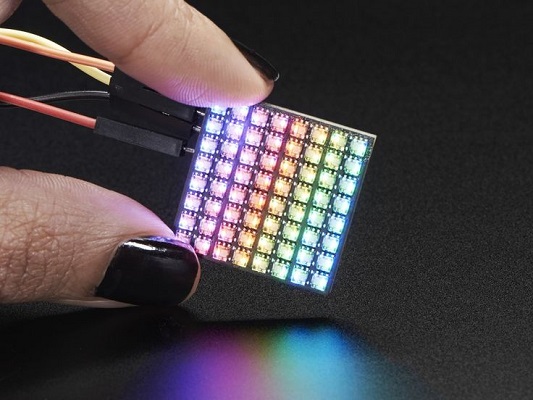Light-emitting diodes, or LEDs, have been around for several decades and have revolutionized the way we light up our homes and streets. Recently, a new type of LED called microLED has emerged and is being touted as the future of display technology. MicroLEDs are tiny LEDs that are smaller than 100 micrometers in size. They emit light in a similar way to traditional LEDs but have several advantages over them. For example, micro-LEDs can produce brighter and more vivid images, have a faster refresh rate, and are more energy-efficient.
This new technology has caught the attention of several research institutions, including the Massachusetts Institute of Technology (MIT). MIT researchers have been working on developing micro-LEDs for use in display technology and have made significant progress in this field.
One of the major challenges facing the development of micro-LEDs is how to efficiently transfer the tiny LEDs onto a substrate to create a display. MIT researchers have come up with a new transfer process that is faster and more efficient than previous methods. This process involves using a special adhesive to transfer the micro-LEDs onto a substrate, eliminating the need for additional steps such as bonding and etching.

Another challenge is how to mass-produce micro-LEDs in a cost-effective way. MIT researchers have also been working on developing new manufacturing processes that could make the production of microLED displays more affordable. The potential applications of micro-LEDs are vast, ranging from large-scale displays for stadiums and public spaces to small displays for wearable devices. MicroLEDs could also be used to create high-resolution, flexible displays for devices such as smartphones and laptops.
Characteristics of MicroLEDs:
The key features and advantages of micro-LEDs include:
- High brightness and contrast: MicroLEDs can emit very bright light and produce deep blacks, resulting in high-contrast images.
- Energy efficiency: MicroLEDs are highly efficient and consume less power than traditional LCD or OLED displays.
- Improved durability: MicroLEDs are built using inorganic materials that are more durable and resistant to degradation compared to organic materials used in OLED displays.
- Wide color gamut: MicroLEDs can produce a wider range of colors compared to traditional displays, leading to more accurate and vivid color reproduction.
- Small form factor: MicroLEDs can be made smaller than traditional displays and have the potential to be integrated into various devices such as smartwatches, AR/VR devices, and more.
- Potential for flexible displays: MicroLEDs can be deposited on flexible substrates, leading to the potential for flexible displays in the future.

Despite these advantages, MicroLEDs are currently more expensive to produce and have limited availability compared to traditional displays, however, as technology advances and production processes improve, it’s expected to become more widespread in the future.
Pros And Cons Of MicroLEDs:
Pros of MicroLEDs:
- High brightness and color quality: Micro-LEDs offer higher brightness and color quality compared to traditional LED displays.

- Improved energy efficiency: MicroLEDs use less power and produce less heat compared to traditional displays.
- Long lifespan: MicroLEDs have a longer lifespan compared to traditional displays.
- Thin and flexible form factor: MicroLEDs are smaller in size and can be made into a flexible form factor, making them ideal for wearable devices and other portable electronics.
Cons of MicroLEDs:
- High cost: MicroLEDs are still a new technology and their production process is more complex and expensive compared to traditional displays.
- Limited availability: MicroLED displays are not widely available and their production is still limited.
- Difficult to manufacture: The production of MicroLEDs is challenging and requires specialized equipment and knowledge.
- Limited resolution: Currently, the resolution of MicroLED displays is limited and they are not yet available in larger sizes.
Conclusion
In conclusion, micro-LEDs have the potential to revolutionize the way we view and interact with displays. With the ongoing research and development by institutions such as MIT, we can expect to see more advanced and affordable microLED displays in the near future.

